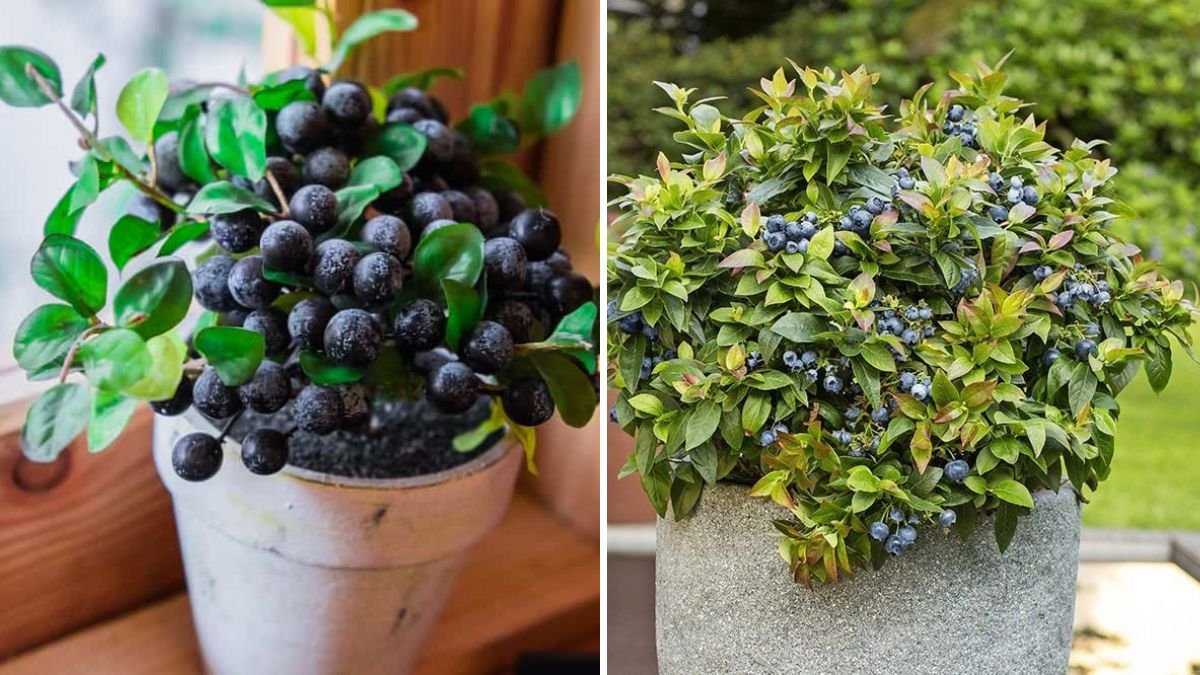Blueberries are a delightful addition to any home garden. Not only are they delicious and packed with antioxidants, but they also offer beautiful foliage and flowers, enhancing the aesthetic of your indoor or balcony garden. While traditionally grown in garden beds, blueberries can thrive in containers, making them perfect for homeowners with limited space. Container gardening allows better control over soil, water, and sunlight, which is essential for this particular fruit crop. This article provides a comprehensive guide on how to grow blueberries in containers at home, from choosing the right variety to proper care and harvesting techniques.
1. Choosing the Right Blueberry Variety
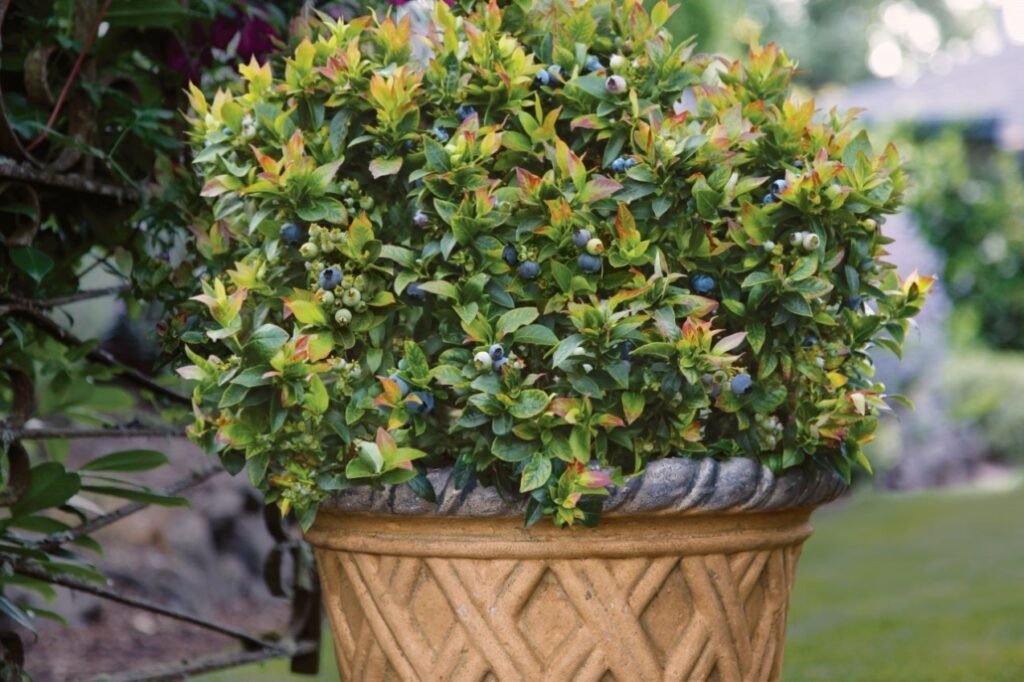
Not all blueberry varieties adapt well to container growth. Selecting the right cultivar is crucial for success:
- Highbush Varieties (Vaccinium corymbosum): Ideal for container cultivation; they produce large, sweet berries. Examples include ‘Bluecrop’, ‘Duke’, and ‘Legacy’.
- Dwarf Varieties: Perfect for small containers and balcony gardens. Examples include ‘Top Hat’, ‘Jelly Bean’, and ‘Peach Sorbet’.
- Rabbiteye Varieties (Vaccinium ashei): Adaptable but require larger pots and warmer climates.
Choosing the correct variety ensures better growth, easier maintenance, and higher fruit yield.
2. Selecting the Right Container
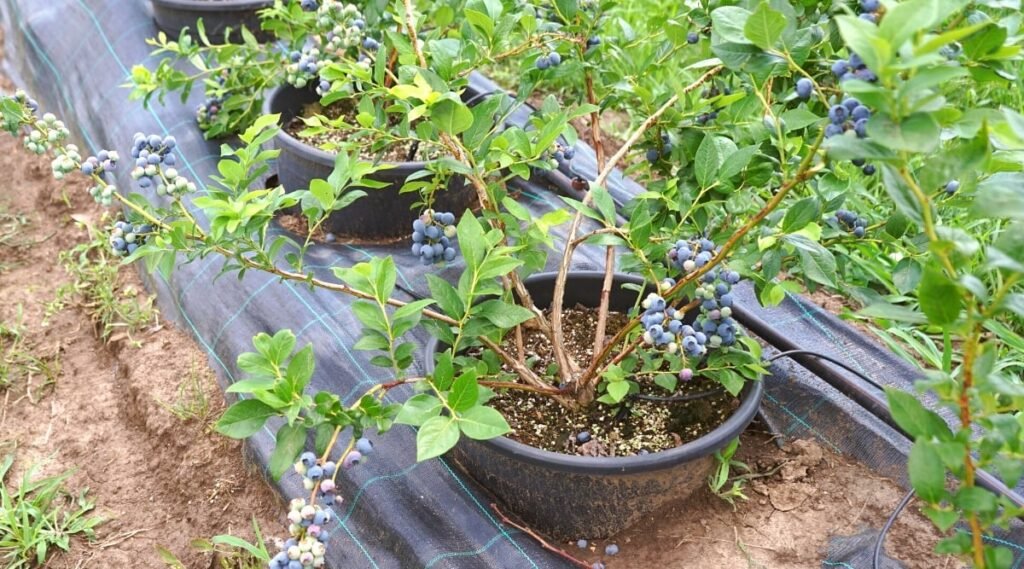
Container selection is a critical factor for blueberry success:
- Size: A container should be at least 18–24 inches in diameter and depth. This provides enough room for the root system, which is shallow but spreads horizontally.
- Material:
- Plastic: Lightweight, retains moisture well.
- Clay/Terracotta: Provides good aeration but dries out faster.
- Fiberglass or Resin: Durable and lightweight for balconies.
- Drainage: Blueberries require excellent drainage. Ensure multiple drainage holes at the bottom to prevent waterlogging.
Using the right container promotes healthy root development and prevents root rot, a common issue in blueberries.
3. Soil Requirements
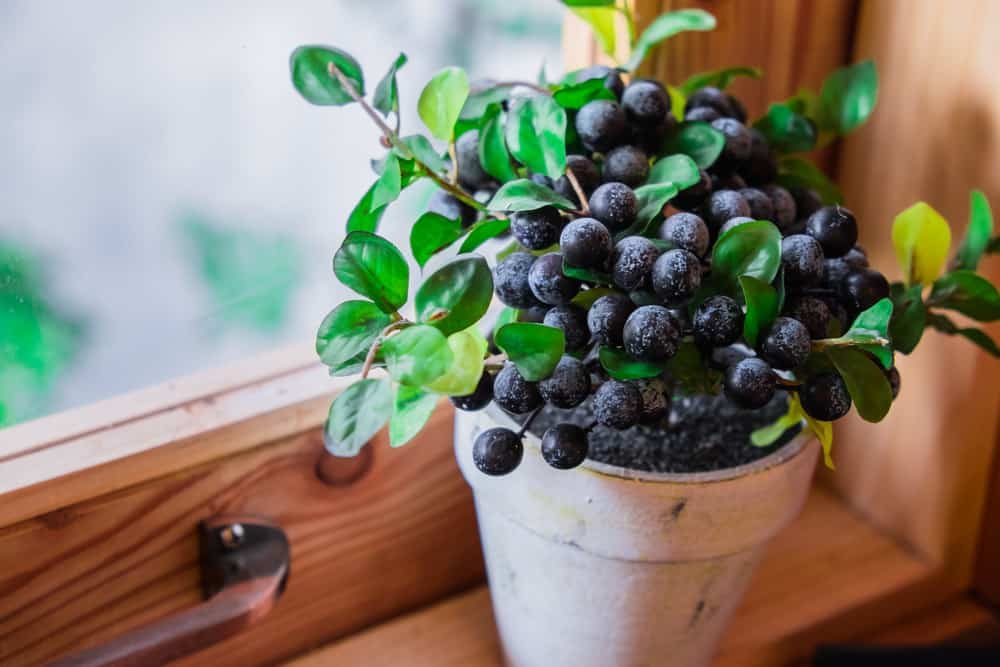
Blueberries are acid-loving plants that need specific soil conditions:
- pH Level: Optimal soil pH is 4.5–5.5, slightly acidic.
- Soil Type: Use a well-draining, loamy soil mixed with peat moss. A typical mix is:
- 50% peat moss
- 25% perlite or coarse sand
- 25% pine bark or compost
- Nutrients: Blueberries are heavy feeders. Add acidic, slow-release fertilizers specifically formulated for ericaceous plants.
Healthy soil ensures strong root systems, vigorous growth, and abundant fruit production.
4. Planting Blueberries in Containers
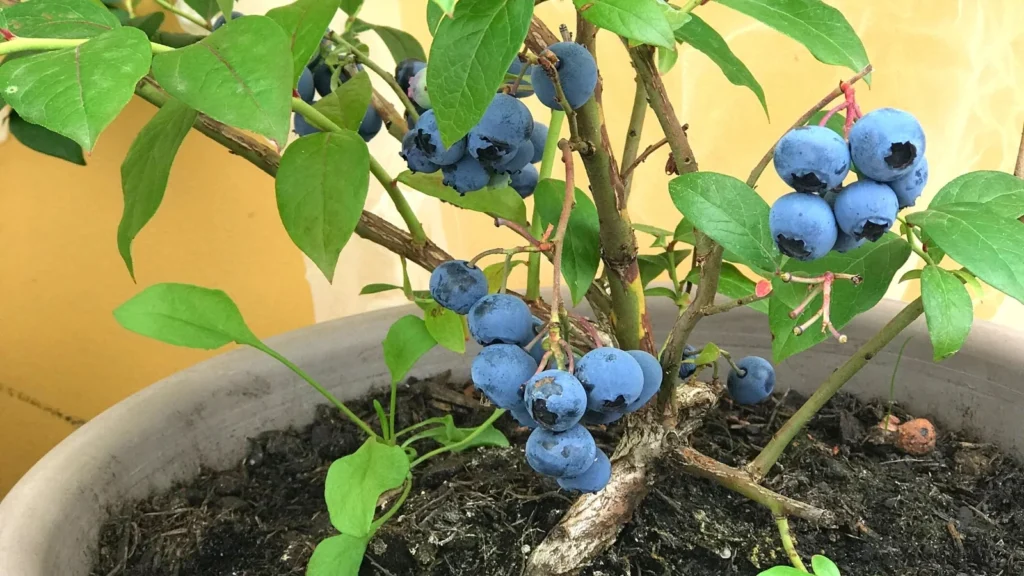
Follow these steps for successful planting:
- Fill the Container: Add the acidic soil mix, leaving about 2 inches from the rim.
- Planting Depth: Position the blueberry plant so that the crown sits slightly above the soil surface.
- Spacing: Only one plant per container is recommended. If planting multiple, use separate pots to avoid root competition.
- Watering: Water thoroughly immediately after planting to help roots establish.
Proper planting lays the foundation for healthy growth and high fruit yields.
5. Sunlight and Location
Blueberries require full sun for optimal fruiting:
- Sunlight Requirements: Aim for 6–8 hours of direct sunlight daily.
- Indoor Placement: If grown indoors, place near a south-facing window or use grow lights for 12–14 hours per day.
- Balcony or Patio: Ensure protection from strong winds and partial shade during the hottest part of the day to prevent leaf scorch.
Sufficient sunlight is critical for flowering, berry formation, and sweetness of fruit.
6. Watering and Humidity
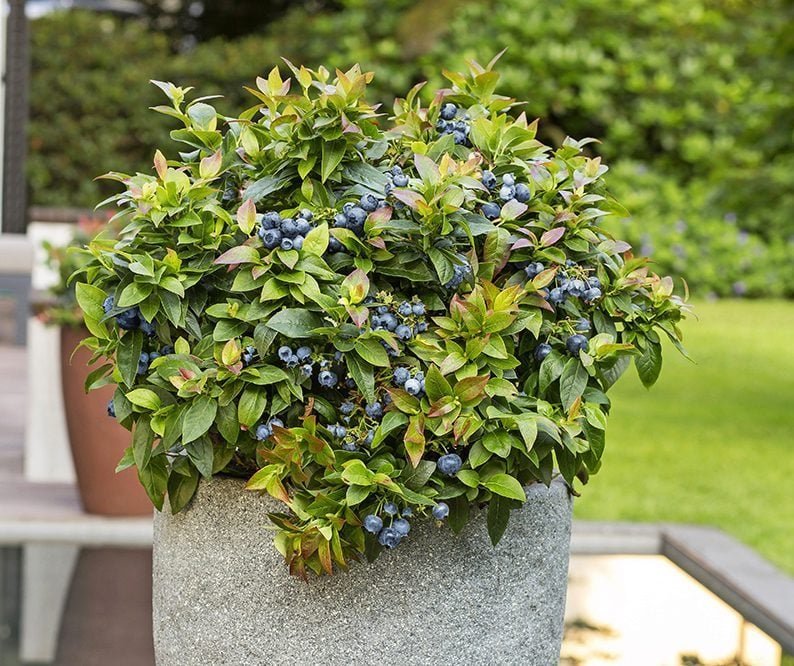
Blueberries are sensitive to both overwatering and drought:
- Watering Frequency: Keep the soil consistently moist but not waterlogged. Water when the top 1–2 inches of soil feel dry.
- Technique: Water at the base, avoiding wetting leaves to reduce fungal disease risk.
- Humidity: If grown indoors, maintain moderate humidity. Use a pebble tray or mist leaves occasionally.
Consistent moisture promotes healthy root systems and abundant fruiting.
7. Fertilization and Nutrition
Proper nutrition supports blueberry growth and berry development:
- Fertilizer Type: Use acidic fertilizers formulated for azaleas or rhododendrons.
- Application: Feed lightly in early spring and again in late spring. Avoid high nitrogen fertilizers, which encourage excessive foliage growth at the expense of fruit.
- Organic Options: Compost, pine bark mulch, or diluted fish emulsion can be added to support natural growth.
Regular feeding ensures vigorous plants and high-quality berries.
8. Pruning and Maintenance
Pruning is essential to maintain plant health and increase fruit yield:
- Timing: Prune in late winter or early spring before new growth begins.
- Technique:
- Remove dead, damaged, or crossing branches.
- Thin out older canes to encourage new growth.
- Cut back weak or non-productive shoots.
- Maintenance: Remove weeds and debris regularly to prevent pests and diseases.
Proper pruning encourages air circulation, sunlight penetration, and robust berry production.
9. Pollination
Most blueberries require cross-pollination for optimal fruiting:
- Variety Selection: Plant two or more compatible varieties close together to improve pollination.
- Pollinators: Bees and other insects are primary pollinators.
- Hand Pollination: In indoor or balcony setups, use a small paintbrush to transfer pollen between flowers for better fruit set.
Pollination directly influences berry size, quantity, and quality.
10. Pests and Disease Management
Container blueberries are less prone to pests than garden-grown plants, but vigilance is necessary:
- Common Pests: Aphids, spider mites, and blueberry maggots.
- Diseases: Powdery mildew, root rot, and leaf spot.
- Prevention:
- Inspect plants regularly.
- Remove affected leaves.
- Maintain good air circulation.
- Organic Control: Use neem oil, insecticidal soap, or introduce natural predators like ladybugs.
Early intervention prevents yield loss and ensures healthy plants.
11. Harvesting Blueberries
Blueberries are ready for harvest when fully colored and slightly soft:
- Timing: Harvest typically in late spring to summer, depending on variety.
- Frequency: Pick every few days as berries ripen to encourage continued fruiting.
- Technique: Gently roll berries between fingers; ripe berries should separate easily.
- Storage: Store in the refrigerator for up to a week, or freeze for long-term storage.
Frequent harvesting boosts productivity and prevents fruit from attracting pests.
12. Benefits of Growing Blueberries in Containers
- Space-Saving: Ideal for balconies, patios, and indoor gardens.
- Controlled Conditions: Allows regulation of soil acidity, moisture, and sunlight.
- Reduced Pest Problems: Containers minimize soil-borne diseases.
- Year-Round Gardening: Moveable pots can be relocated for seasonal protection.
- Aesthetic Appeal: Blueberry plants add flowers, foliage, and colorful fruit to any home environment.
Container-grown blueberries combine functionality, beauty, and practicality, making them perfect for urban gardeners.
Conclusion
Growing blueberries in containers at home is a rewarding way to enjoy fresh, homegrown fruit, even in limited spaces. By choosing the right variety, providing acidic and well-draining soil, ensuring adequate sunlight, and maintaining proper watering, fertilization, and pruning, anyone can cultivate thriving blueberry plants in pots.
Key Takeaways:
- Select highbush or dwarf varieties suitable for containers.
- Use large, well-draining containers for optimal root development.
- Provide acidic, nutrient-rich soil for healthy growth.
- Ensure 6–8 hours of sunlight daily or supplement with grow lights.
- Maintain consistent watering and moderate humidity.
- Fertilize with acidic fertilizers and prune regularly for productivity.
- Encourage pollination by planting compatible varieties or hand-pollinating.
- Monitor for pests and diseases, and harvest berries as they ripen.
With proper care, container blueberries offer a beautiful, productive, and healthy addition to any home garden, delivering fresh fruit and a satisfying gardening experience year after year.
